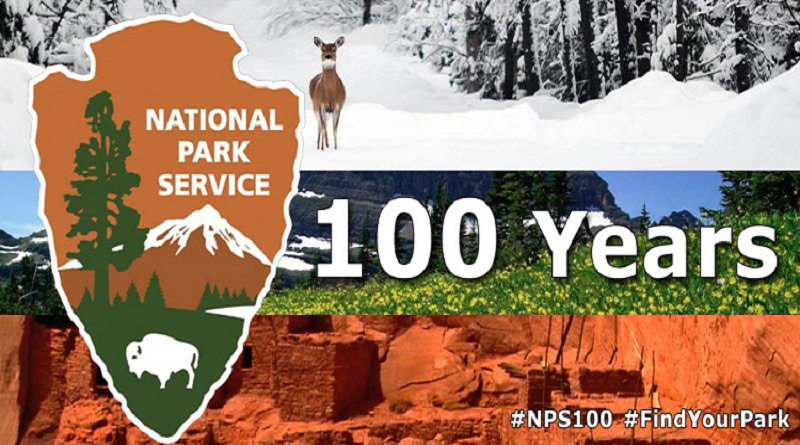Happy 100 Years National Park Service
Just three years after Congress established Yellowstone National Park in the Rocky Mountain territories of Montana and Wyoming (in March, 1872), Mackinac National Park was established—becoming just the second National Park in the U.S. After 20 years, in 1895, it was transferred to state control and recognized as Mackinac Island State Park—the first state park in Michigan.
It wasn’t until Aug. 25, 1916 (44 years after Yellowstone), that President Woodrow Wilson signed the act that officially established the National Park Service to manage the then 35 parks and monuments. Today, there are a combined 390+ national battlefields, parks, sites, lakeshores, preserves, trails, rivers, memorials and monuments encompassing more than 84 million acres.
According to the National Park Service, Michigan currently has seven (7) unique sites in that are maintained by the NPS (descriptions reprinted from the website).
UPPER PENINSULA
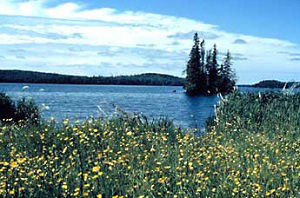
Isle Royale National Park — Houghton
Explore a rugged, isolated island, far from the sights and sounds of civilization. Surrounded by Lake Superior, Isle Royale offers unparalleled solitude and adventures for backpackers, hikers, boaters, kayakers, canoeists and scuba divers. Here, amid stunning scenic beauty, you’ll find opportunities for reflection and discovery and make memories that last a lifetime.
This forested island, the largest in Lake Superior, is distinguished by its wilderness character, timber wolves, moose herd and pre-Columbian copper mines.
Authorized March 3, 1931. Boundary changes: May 28, 1934; June 20, 1938; March 6, 1942; Aug. 14, 1958; April 11, 1972; Oct. 20, 1976. Wilderness designated Oct. 20, 1976. Designated a Biosphere Reserve 1980. Acreage—571,790.11 Federal: 539,281.87 Nonfederal: 32,508.24. Land area: 133,781.87. Wilderness area: 132,018.
(Source: https://www.nps.gov/hfc/products/pubs/NPS_index2009_11.pdf).
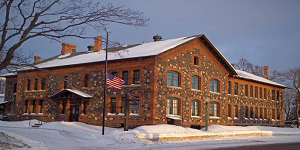
Keweenaw National Historical Park — Calumet
From 7,000 years ago to the 1900s people mined Keweenaw copper. Native peoples made copper into tools and trade items. Investors and immigrants arrived in the 1800s in a great mineral rush, developing thriving industries and cosmopolitan communities. Though the mines have since closed, their mark is still visible on the land and people.
The park preserves and interprets the history of the Keweenaw Peninsula beginning with prehistoric activity nearly 7,000 years ago through large-scale industrial mining in the 1800s and 1900s. The park’s Keweenaw Heritage Sites partners operate most visitor facilities, providing diverse experiences and views of the industry and its participants. LIMITED FEDERAL FACILITIES.
Established Oct. 27, 1992. Acreage—1,870.32 Federal: 135.35 Nonfederal: 1,734.97.
(Source: https://www.nps.gov/hfc/products/pubs/NPS_index2009_11.pdf).
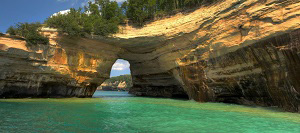
Pictured Rocks National Lakeshore — Munising & Grand Marais
Sandstone cliffs, beaches, sand dunes, waterfalls, lakes, forest, and shoreline beckon you to visit Pictured Rocks National Lakeshore. Hiking, camping, sightseeing, and four season outdoor opportunities abound. The lakeshore hugs the Lake Superior shoreline for more than 40 miles. Lake Superior is the largest, deepest, coldest and most pristine of all the Great Lakes.
Multicolored sandstone cliffs, long beach strands, towering sand dunes, waterfalls, inland lakes, wetlands, hardwood and coniferous forests and a variety of wildlife compose this scenic area on Lake Superior.
Authorized Oct. 15, 1966; established Oct. 5, 1972. Boundary changes: Nov. 12, 1996; Nov. 25, 2002. Acreage—73,235.83 Federal: 35,728.86 Nonfederal: 37,506.97. Land area: 63,122.08.
(Source: https://www.nps.gov/hfc/products/pubs/NPS_index2009_11.pdf).
LOWER PENINSULA
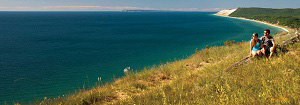
Sleeping Bear Dunes National Lakeshore — Empire
Miles of sand beach, bluffs that tower 450’ above Lake Michigan, lush forests, clear inland lakes, unique flora and fauna make up the natural world of Sleeping Bear Dunes. High dunes afford spectacular views across the lake. An island lighthouse, US Life-Saving Service stations, coastal villages, and picturesque farmsteads reflect the park’s rich maritime, agricultural and recreational history.
Named the “Most Beautiful Place in America” in 2011 by viewers of Good Morning America.
This is a diverse landscape with quiet rivers, sandy beaches, beech-maple forests, clear lakes, and massive “perched” sand dunes towering up to 460 feet above Lake Michigan. Two offshore wilderness islands offer tranquility and seclusion. The many historic sites include a lighthouse, life-saving service stations and agricultural landscapes.
Established Oct. 21, 1970. Boundary change: May 28, 2004. Acreage—71,291.37 Federal: 57,344.47 Nonfederal: 13,946.90. Land area: 59,471.
(Source: https://www.nps.gov/hfc/products/pubs/NPS_index2009_11.pdf).
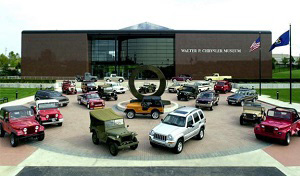
Motor Cities National Heritage Area — Detroit
If you are interested in automotive history, then MotorCities National Heritage Area is the place to be. Tour the factory where Henry Ford created and built the Model T. Learn the stories behind the creation of General Motors and DamilerChrysler. Come with us and learn about the long and sometimes tenuous relationship between Labor and Industry while experiencing southeast Michigan.
The area consists of six corridors representing the region that put the world on wheels. Auto-related museums, historical sites, and natural, cultural,and recreational resources link, protect, preserve and interpret the automobile’s story.
Authorized Nov. 6, 1998.
(Source: https://www.nps.gov/hfc/products/pubs/NPS_index2009_11.pdf).
River Raisin National Battlefield Park — Monroe
River Raisin National Battlefield Park preserves, commemorates, and interprets the January 1813 battles of the War of 1812 and their aftermath in Monroe and Wayne counties in SE Michigan. The Battle resulted in the greatest victory for Tecumseh’s American Indian confederation and the greatest defeat for the U.S. The resulting rally cry “Remember the Raisin” spurred support for the rest of the war.
Designated as a Michigan Historic Site on Feb. 18, 1956 and added to the National Register of Historic Places on Dec. 10, 1982.
Established March 30, 2009 (as the 393rd unit of the National Park Service) and began operation on October 22, 2010 as one of the four National Battlefield Parks in the country.
STATEWIDE
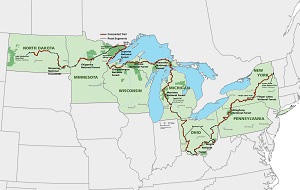 North Country National Scenic Trail
North Country National Scenic Trail
From Crown Point, New York to Lake Sakakawea in North Dakota, this 3,200-mile trail links scenic, natural, historic and cultural areas across seven states (MI, MN, ND, NY, OH, PA, WI), allowing visitors to experience a variety of northern landscapes. When completed, this trail will be the longest continuous hiking trail in the United States.
Established March 5, 1980.
(Source: https://www.nps.gov/hfc/products/pubs/NPS_index2009_11.pdf).
OTHER NATIONAL SITES
Michigan is also home to an “affiliated” area that preserve significant properties outside the National Park System:
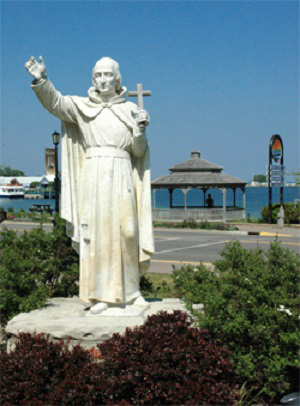
Father Marquette National Memorial pays tribute to the life and work of Father Jacques Marquette, French priest and explorer. It is located in Straits State Park near St. Ignace (Upper Peninsula), where Marquette founded a Jesuit mission in 1671 and was buried in 1678.
Authorized Dec. 20, 1975. Acreage—52, all nonfederal.
(Source: https://www.nps.gov/hfc/products/pubs/NPS_index2009_11.pdf).
FOR MORE FUN (on a national scale):
New IMAX film presents parks in never-seen-before, breathtaking ways!
The U.S. Postal Service has unveiled 16 postage stamps featuring national parks!
#FindYourPark #NPS100 #NationalParks #PureMichigan
Safe Travels!


